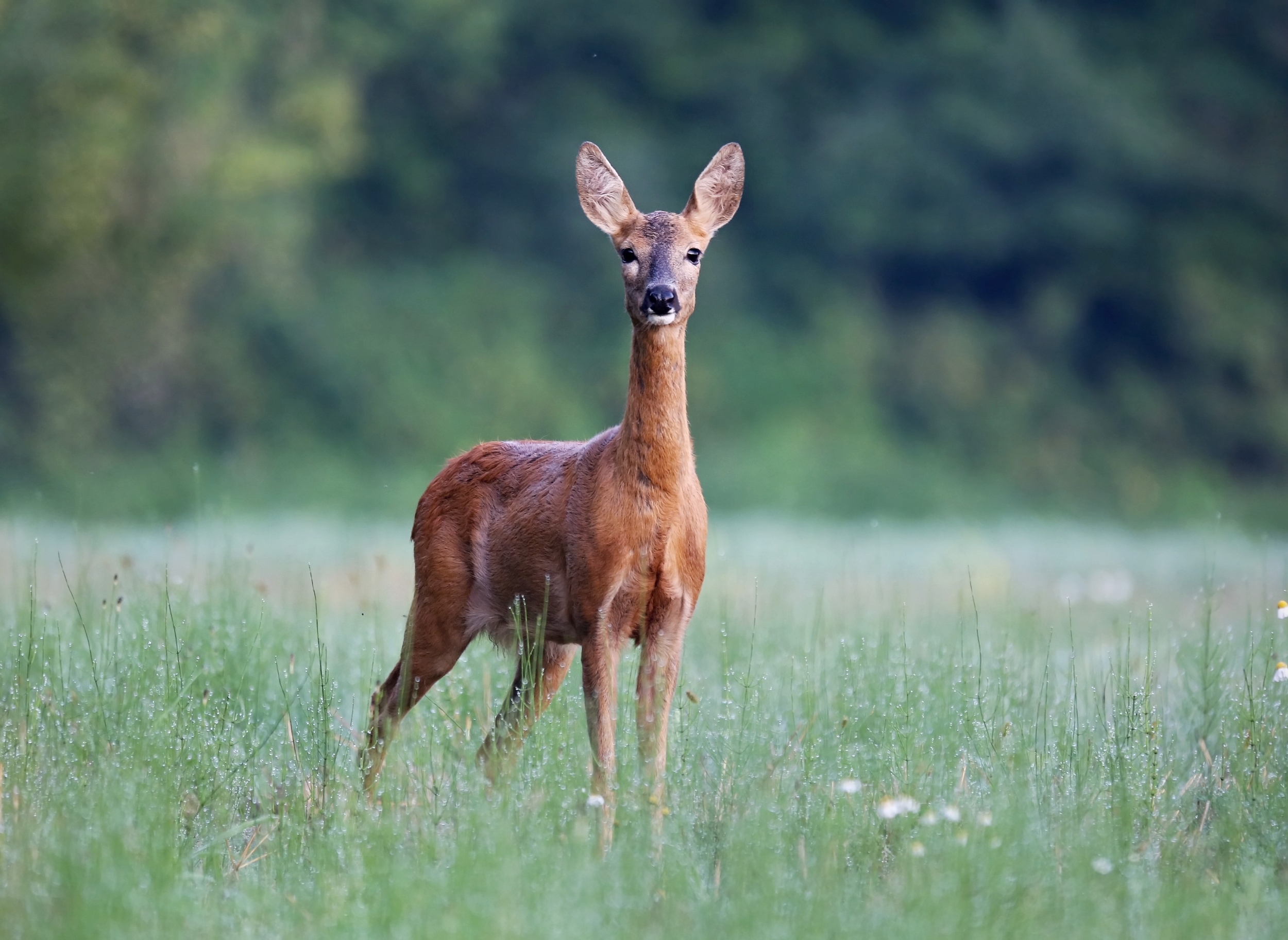For wild animals, survival may come down to the split-second decision to bolt or stay put when danger appears. A new study traces that choice to a tiny cluster of neurons deep in the midbrain.
By comparing two closely related deer mouse species, the team showed that evolution simply tunes the sensitivity of this hub rather than rebuilding the whole defensive network.
Forest-dwelling Peromyscus maniculatus flee at the faintest hint of a hawk, while open field Peromyscus polionotus remain statues until the threat becomes overwhelming.
Study co-lead Felix Baier of Harvard University teamed up with Karl Farrow at the Vlaams Instituut voor Biotechnologie (VIB) in Leuven to identify the neurons involved in the brain’s survival switch.
Same senses, different instincts
Predators strike in milliseconds, yet landscapes differ. Animals can easily take cover in a brushy habitat, but not necessarily on the prairie.
As a result, deer mice have evolved opposite default settings, even though their eyes and ears register danger with equal fidelity.
Baier’s group confirmed this by showing identical activity in the optic tract and superior colliculus of both species during low intensity “shadow” stimuli. Only the behavior diverged, proving the sensory side was not the source of the split.
Survival switch controls fear response
Attention then turned to the dorsal periaqueductal gray (dPAG), a cigar shaped nucleus already known to initiate escape in laboratory mice.
Neuropixels probes – silicon shanks carrying hundreds of electrodes – recorded each spike while looming discs simulated an aerial predator attack.
In forest mice, a single loom sparked a volley in dPAG neurons that paralleled running speed. Open field cousins showed only a muted dPAG murmur even when their feet finally flew, meaning the threshold for firing was set far higher.
“We were surprised to find that evolution acted in a central brain region, downstream of peripheral sensory perception,” said Baier.
Survival switch in other animals
The dorsal periaqueductal gray (dPAG) has long been known as a key hub for defensive behavior in mammals.
In lab mice and rats, stimulating this region can trigger running, jumping, or even vocalizations. In humans, analogous brainstem structures help process intense fear and panic.
By focusing on the dPAG, the researchers tapped into a deeply conserved circuit. Yet the study shows that even hardwired regions like this one can be tweaked to meet local demands.
That finding challenges the assumption that core survival systems are biologically fixed across species.
Same midbrain, different reactions
Next, the team used optogenetics to nudge the hub. Flash activating excitatory cells in the forest species made them sprint even when the arena was calm.
The same light caused prairie mice to decelerate or halt, as though the stimulation felt more like a brake than a gas pedal.
When researchers used chemogenetics to dampen activity in the brain’s escape hub, forest mice began behaving like their prairie relatives – waiting longer and needing a stronger threat signal before reacting.
The reverse manipulation never flipped prairie mice into hyper skittish mode, highlighting their raised internal threshold.
Midbrain tweaks when to escape
Such fine grained tuning matches recent work showing that GABA rich neurons in dPAG set the “go/no go” point for escape.
In the new study, inhibitory cells lit up strongly in the forest species but stayed mostly quiet in the prairie species, hinting that evolution dialed inhibition rather than altering excitatory drive.
Other animals deploy similar tricks. In zebrafish, threat avoidance ensembles in the dPAG scale with distance from a predator. That parallel supports the idea that central thresholds, not peripheral sensitivity, often decide which hard wired action rolls out.
Habitat shapes the survival switch
The two mouse species occupy very different landscapes shaped by predation risk. In brushy forests, motion attracts less attention than freezing, since cover is nearby.
On open plains, stillness may be the best way to avoid being spotted by aerial predators. These constraints likely drove selection for divergent midbrain response thresholds.
Shifting the escape threshold in a central node like the dPAG may offer an efficient solution. Rather than overhauling sensory input or building a new circuit, evolution simply adjusts how soon a threat triggers action.
This flexibility may also explain why such neural adaptations can arise repeatedly in separate species facing similar pressures.
What it means for human fear
The findings add to a growing picture in which survival circuits come with built-in sliders that natural selection can nudge. That economy may explain why species thriving in wildly different niches still share a common neural architecture.
The findings also have medical relevance: overactive defensive circuits are linked to panic and anxiety disorders in humans.
Discovering that a single midbrain hub can adjust its sensitivity opens up potential strategies for recalibrating fear responses without dulling sensory perception.
The study is published in the journal Nature.
—–
Like what you read? Subscribe to our newsletter for engaging articles, exclusive content, and the latest updates.
Check us out on EarthSnap, a free app brought to you by Eric Ralls and Earth.com.
—–
